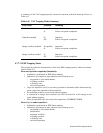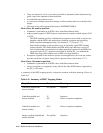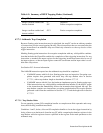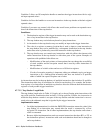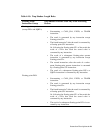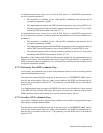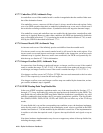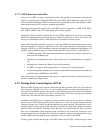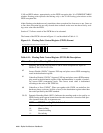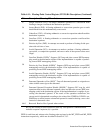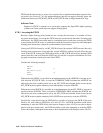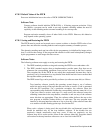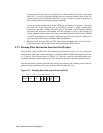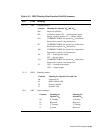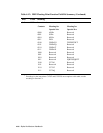Instruction Descriptions 4–79
4.7.7.11 IEEE Denormal Control Bits
In the case of IEEE exception completion modes, the handling of denormal operands and
results is controlled by the DNZ and UNDZ bits in the FPCR. These denormal control bits only
affect denormal handling by IEEE instructions that are modified by any valid qualifier combi-
nation that includes the /S (exception completion) qualifier.
The denormal control bits apply only to the IEEE operate instructions – ADD, SUB, MUL,
DIV, SQRT, CMPxx, and CVT with floating-point source operand.
If both the UNFD (underflow disable) bit and the UNDZ (underflow to zero) bit are set in the
FPCR, the implementation sets the result of an underflow operation to a true zero result. The
zeroing of a denormal result by UNDZ must also be treated as an inexact result.
If the DNZ (denormal operands to zero) bit is set in the FPCR, the implementation treats each
denormal operand as if it were a signed zero value. The source operands in the register are not
changed. If DNZ is set, IEEE operations with any valid qualifier combination that includes a /S
qualifier signal arithmetic traps as if any denormal operand were zero; that is, with DNZ set:
• An IEEE operation with a denormal operand never generates an overflow, underflow, or
inexact result arithmetic trap.
• Dividing by a denormal operand is a division by zero or invalid operation as appropri-
ate.
• Multiplying a denormal by infinity is an invalid operation.
• A SQRT of a negative denormal produces a –0 instead of an invalid operation.
• A denormal operand, treated as zero, does not take the denormal operand exception trap
controlled by the DNOD bit in the FPCR.
Note that a hardware implementation may choose to support any subset of the denormal con-
trol bits, including the empty subset.
4.7.8 Floating-Point Control Register (FPCR)
When an IEEE floating-point operate instruction specifies dynamic mode (/D) in its function
field (function field bits <12:11> = 11), the rounding mode to be used for the instruction is
derived from the FPCR register. The layout of the rounding mode bits and their assignments
matches exactly the format used in the 11-bit function field of the floating-point operate
instructions. The function field is described in Section 4.7.9.
In addition, the FPCR gives a summary of each exception type for the exception conditions
detected by all IEEE floating-point operates thus far, as well as an overall summary bit that
indicates whether any of these exception conditions has been detected. The individual excep-
tion bits match exactly in purpose and order the exception bits found in the exception summary
quadword that is pushed for arithmetic traps. However, for each instruction, these exception
bits are set independent of the trapping mode specified for the instruction. Therefore, even
though trapping may be disabled for a certain exceptional condition, the fact that the excep-
tional condition was encountered by an instruction is still recorded in the FPCR.
Floating-point operates that belong to the IEEE subset and CVTQL, which belongs to both



